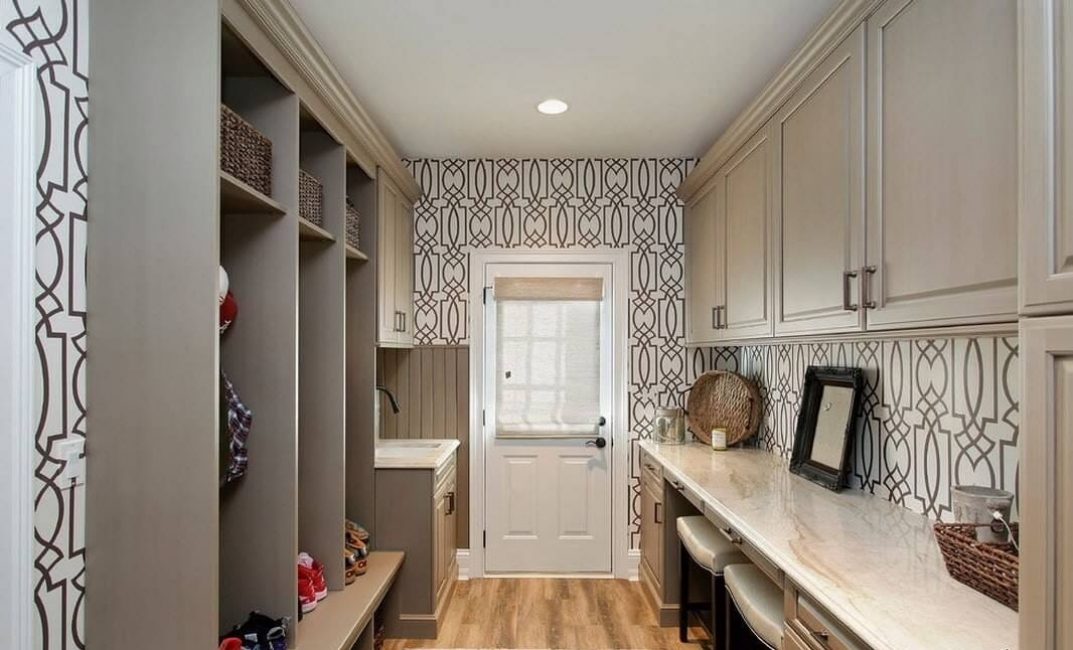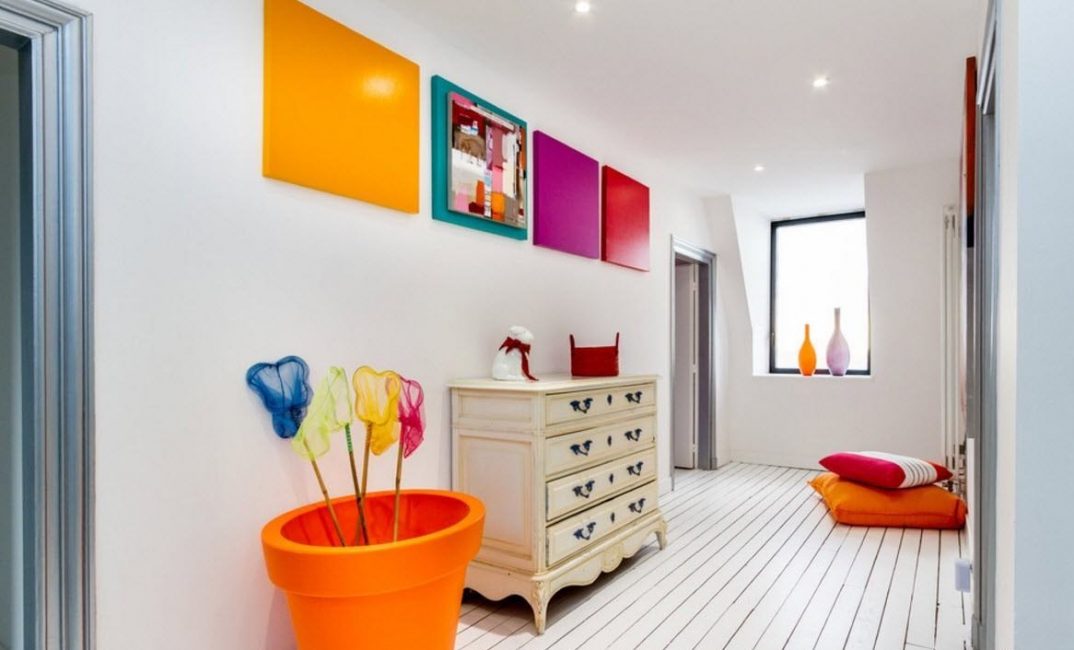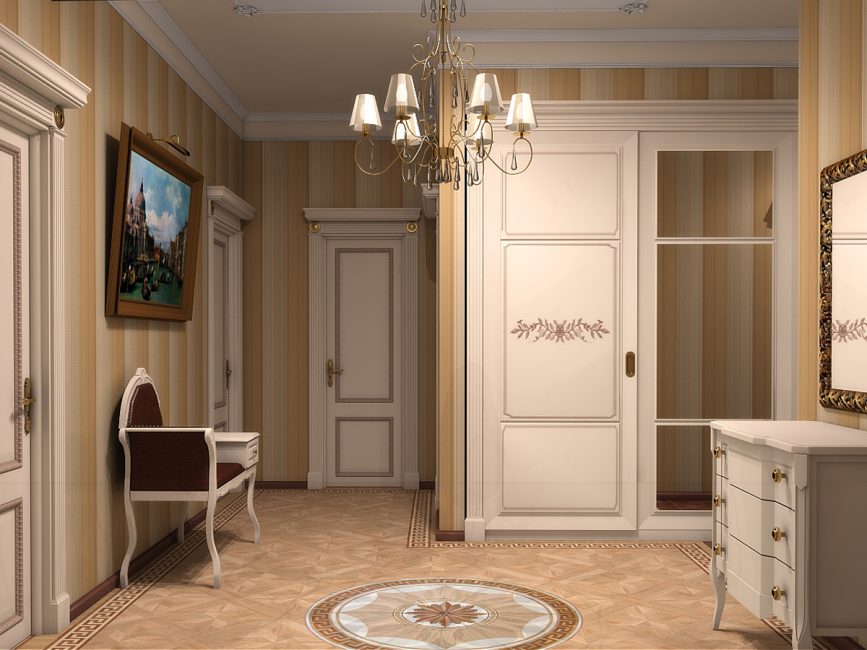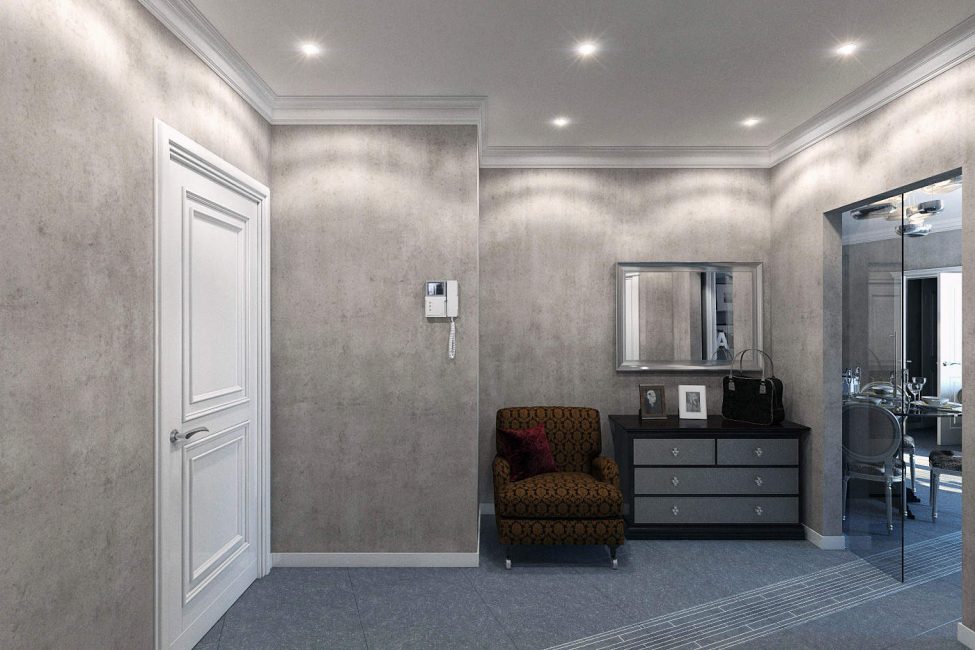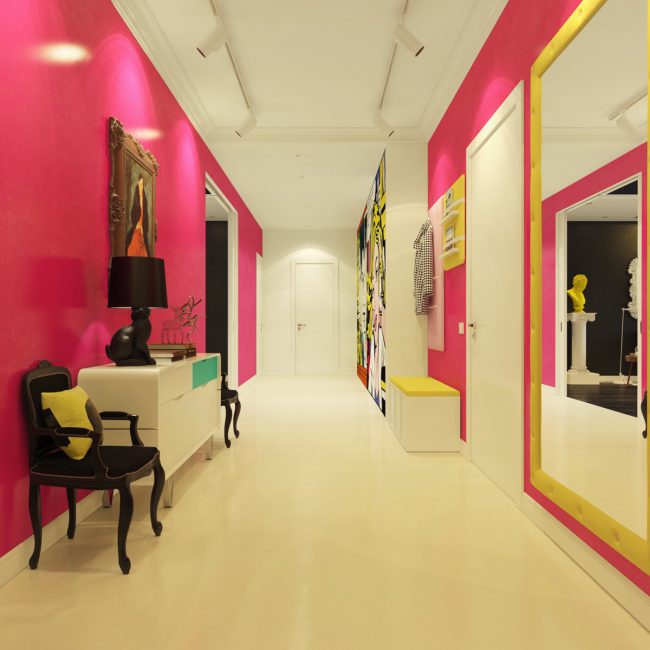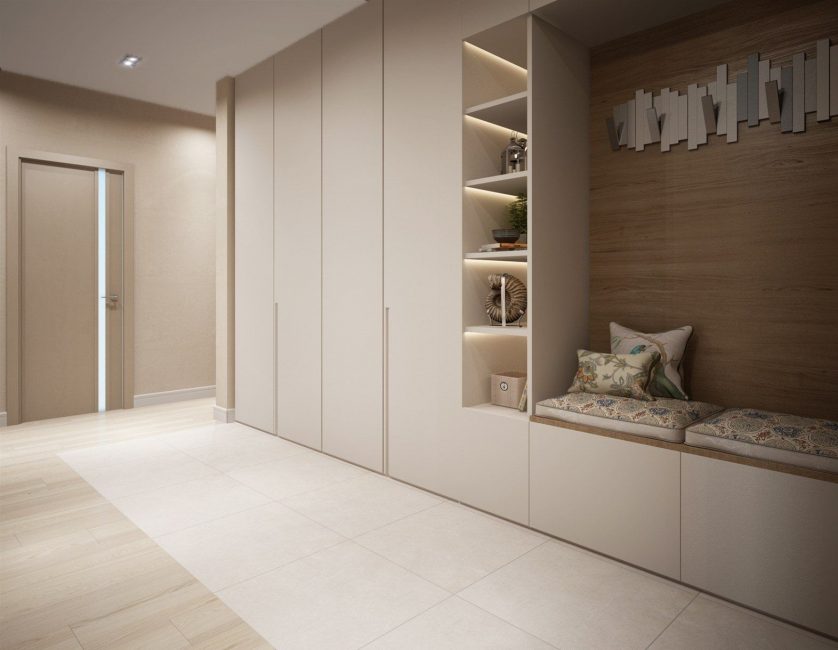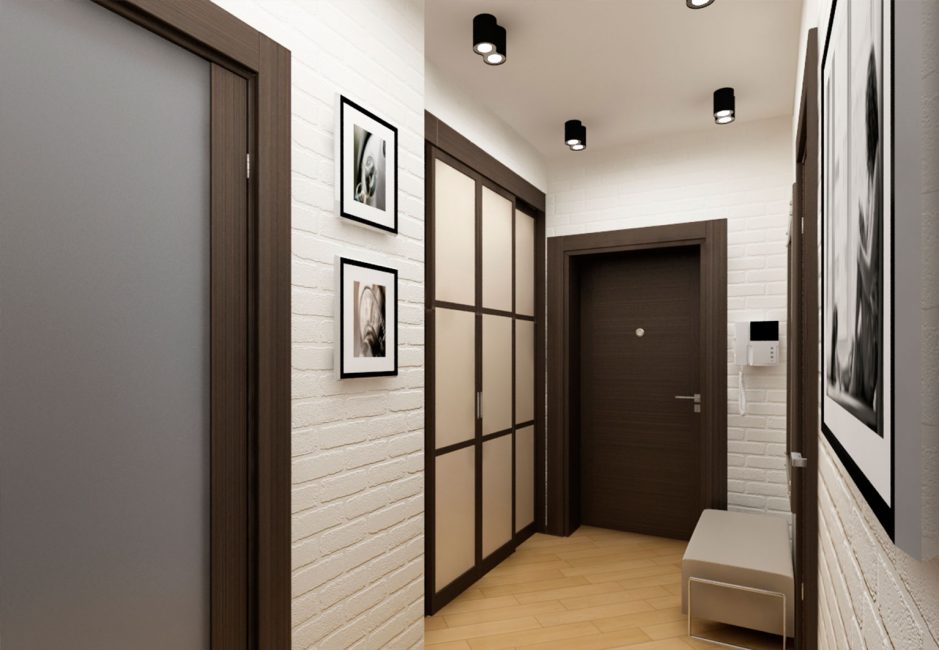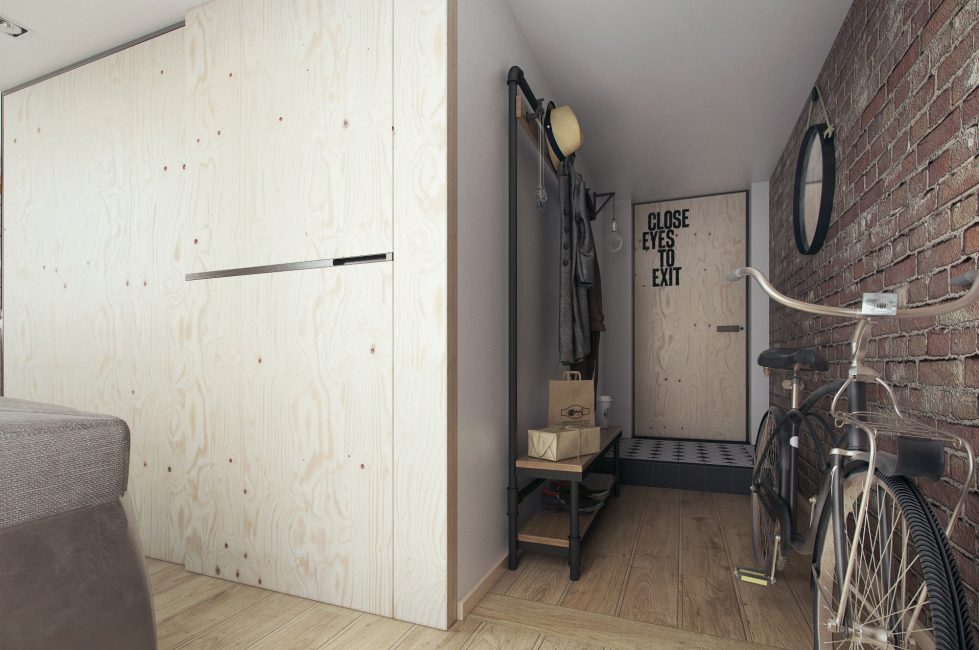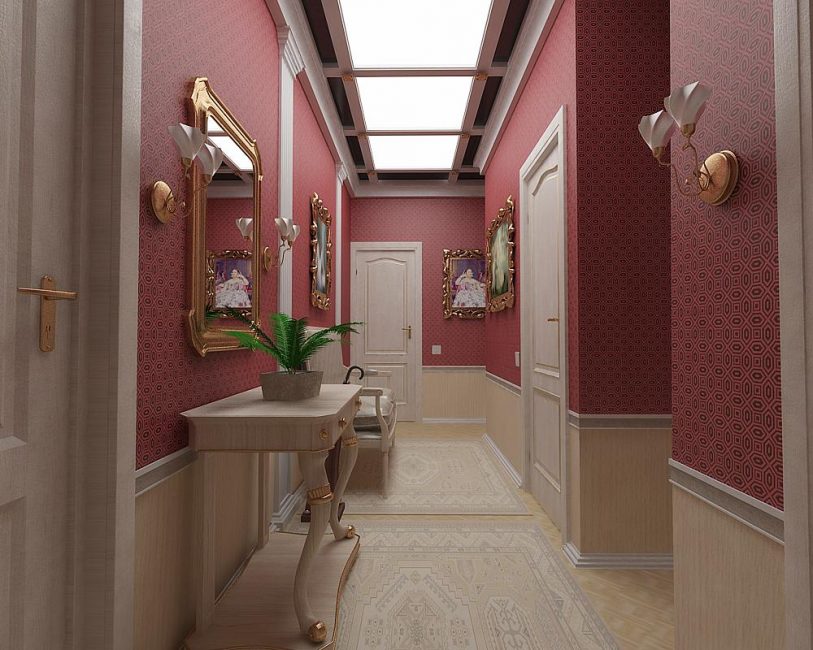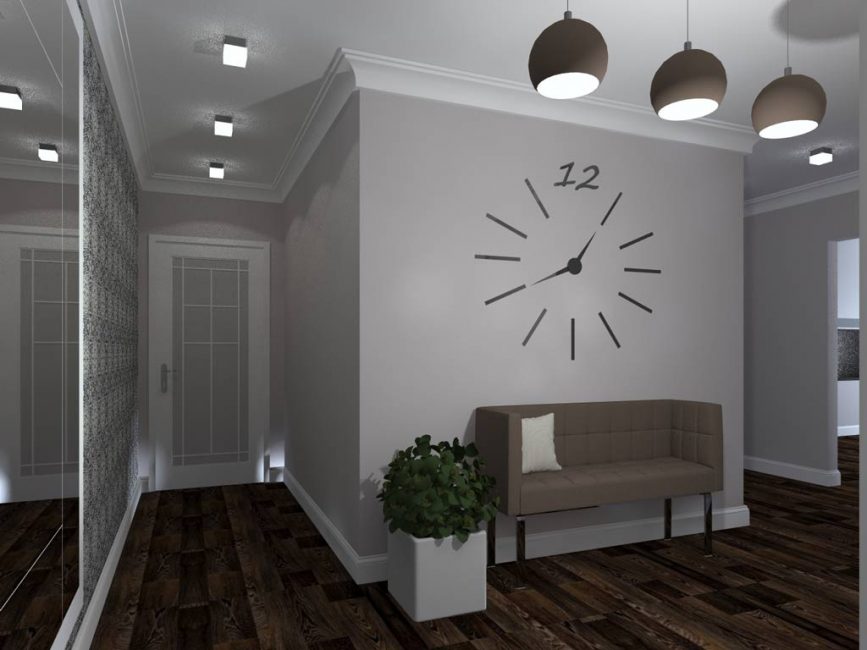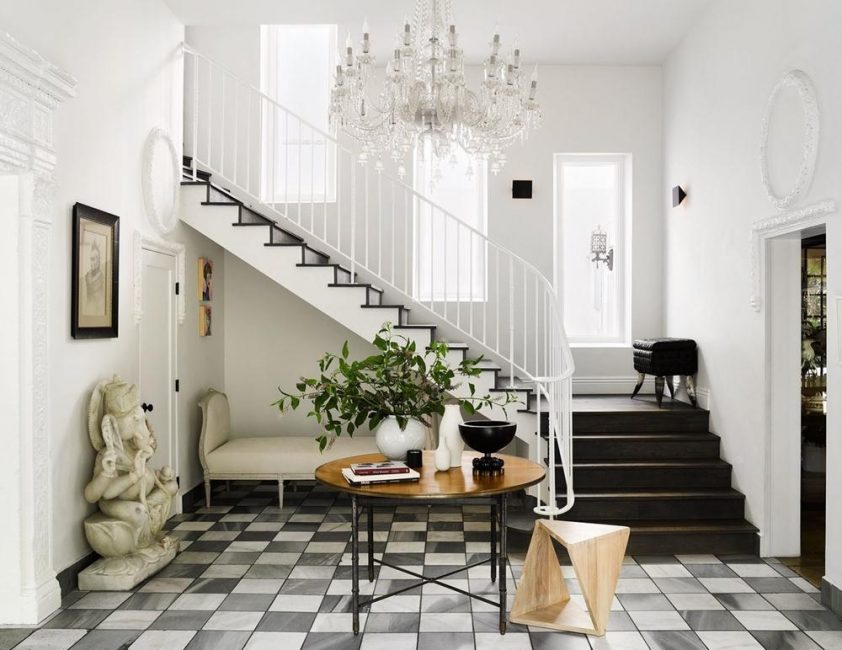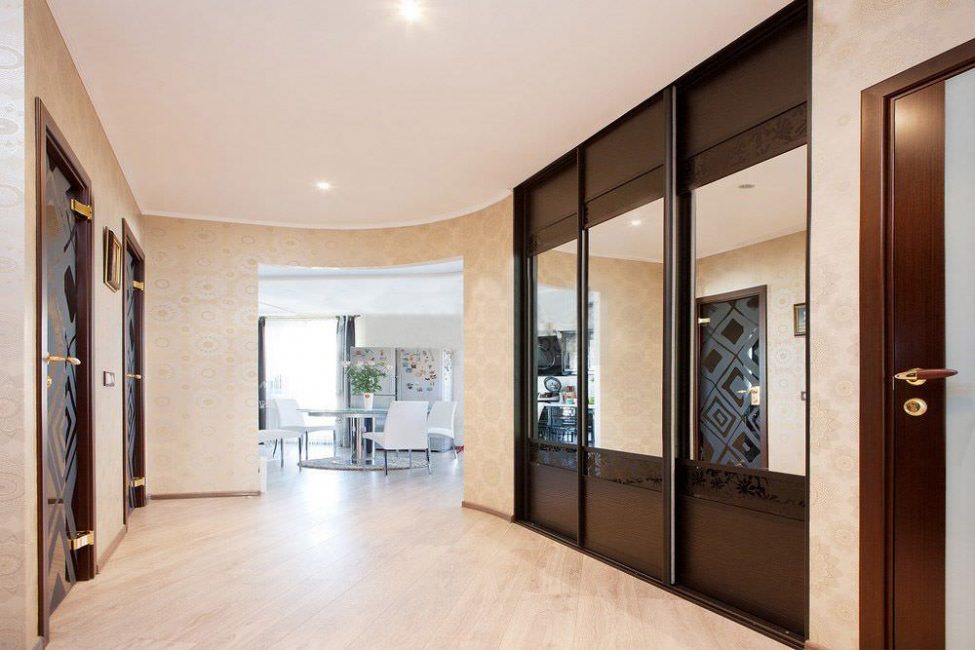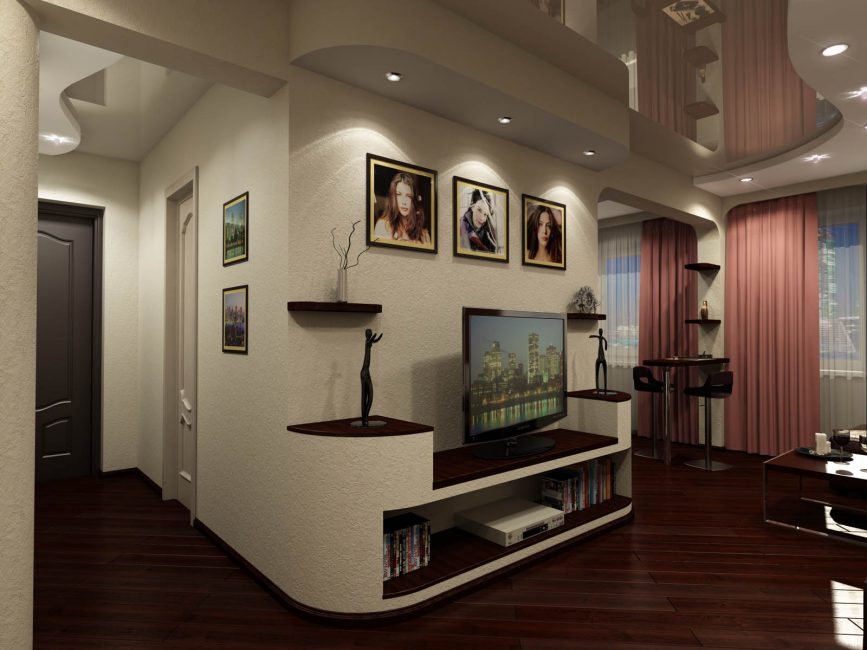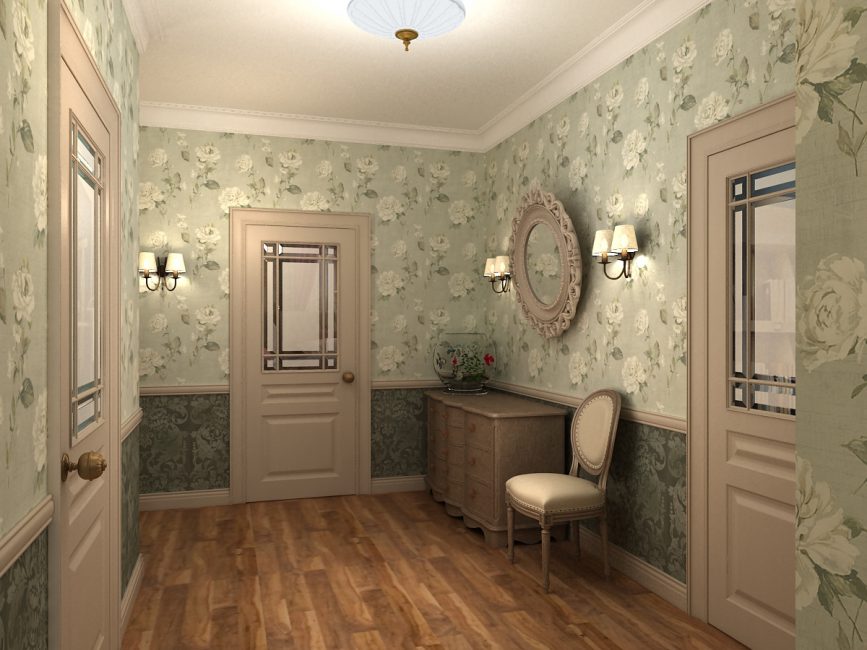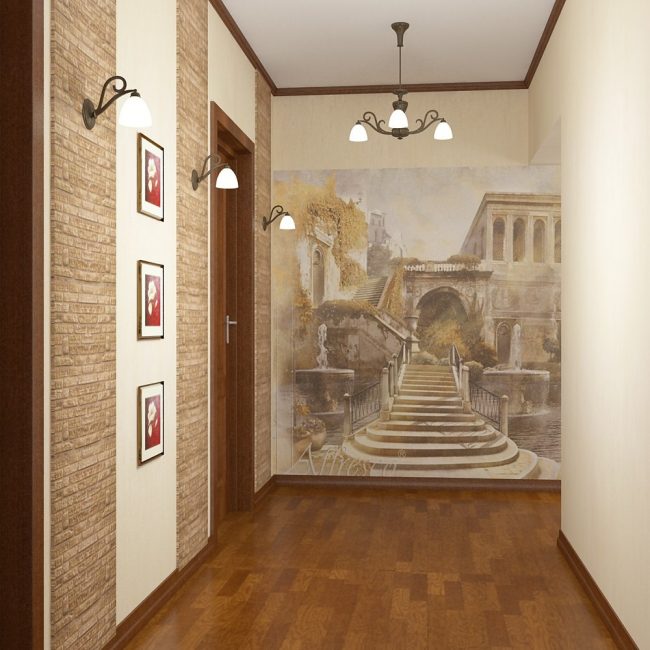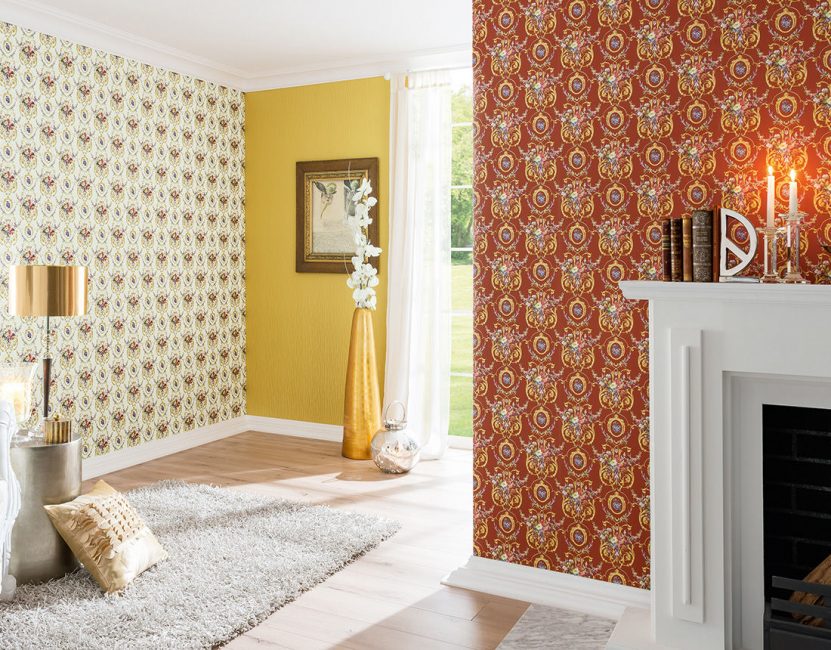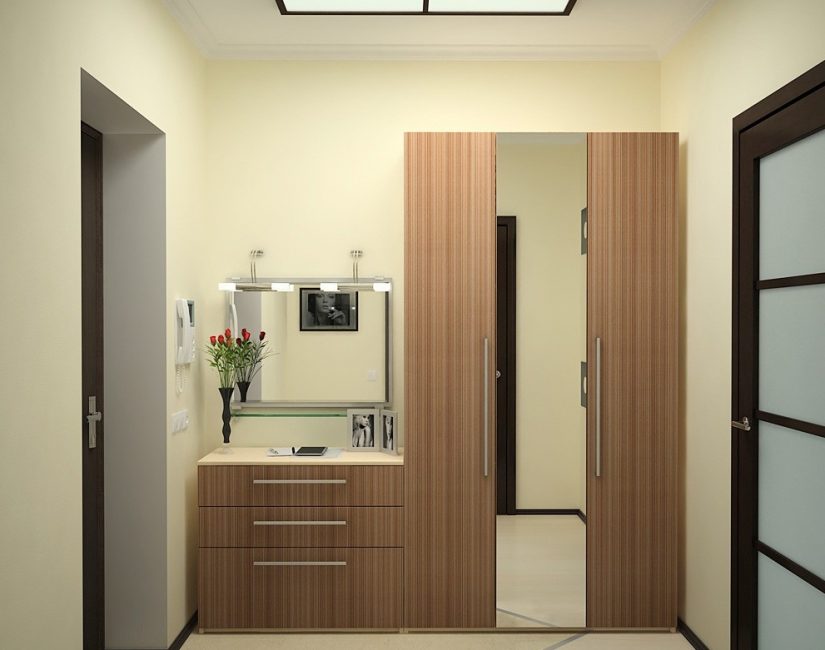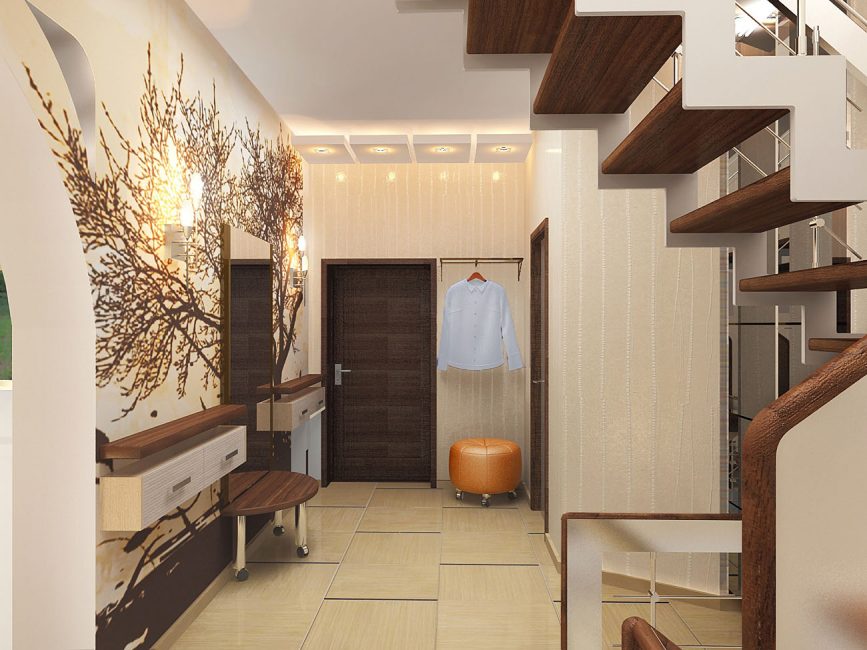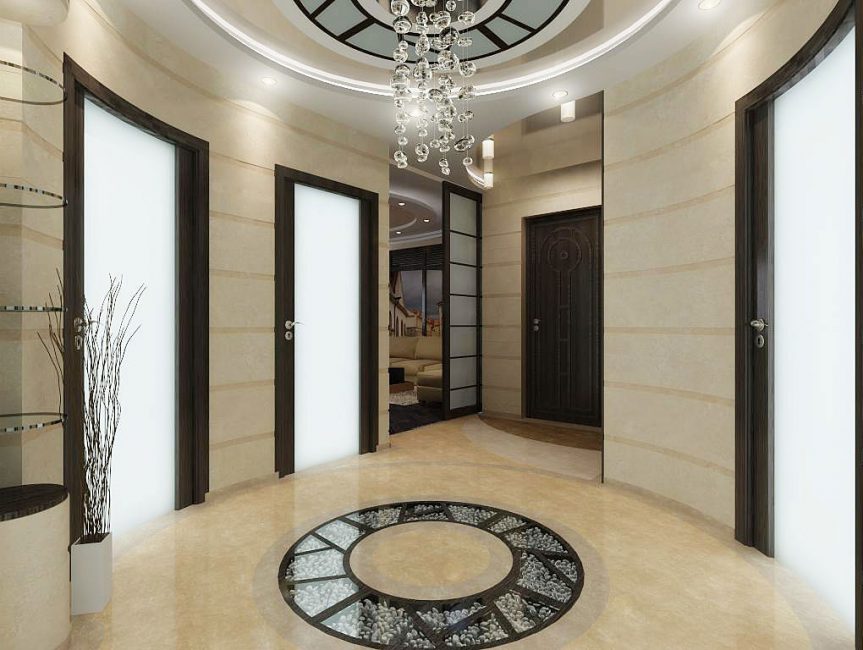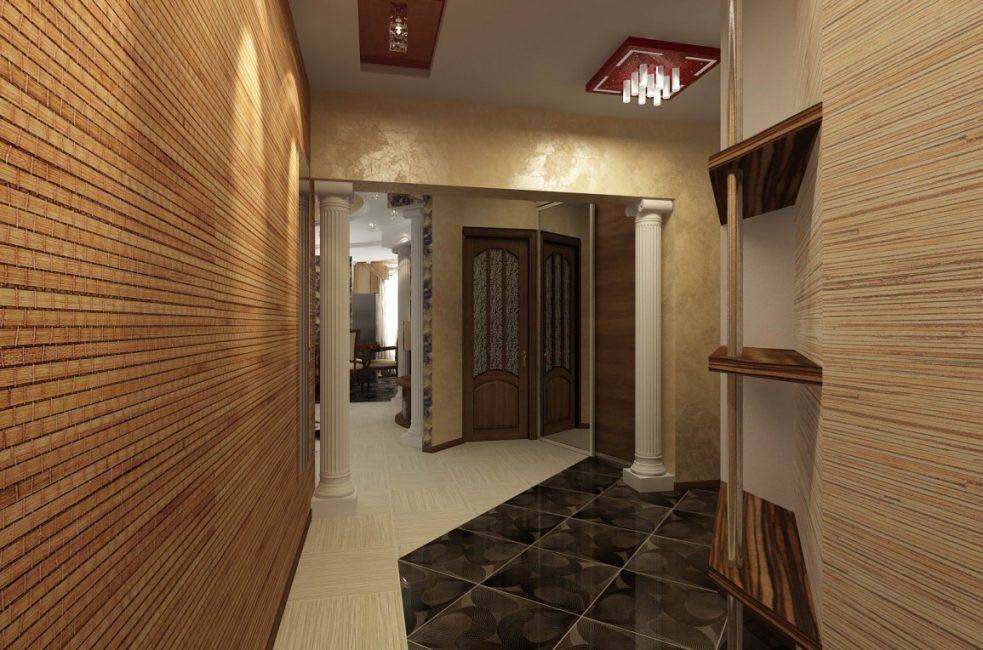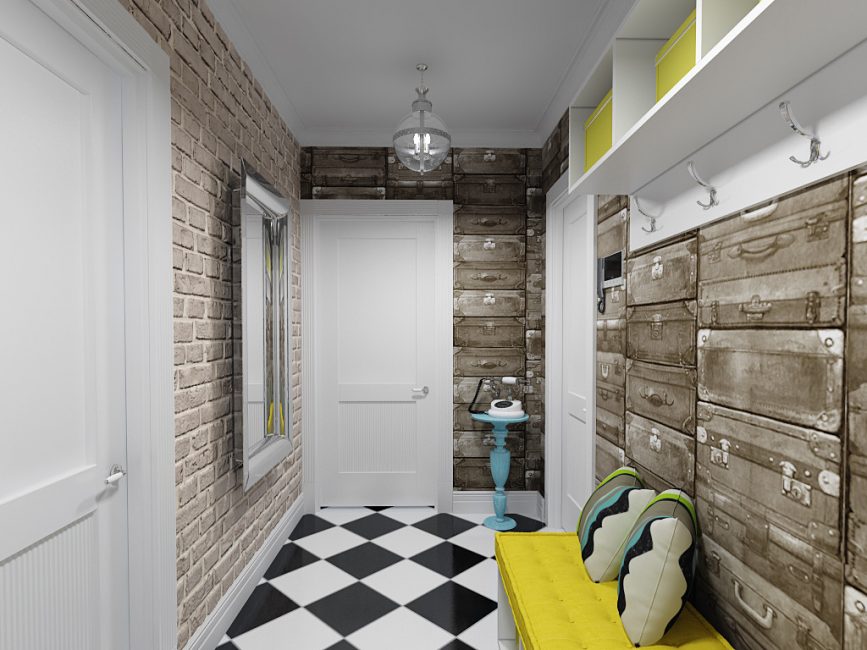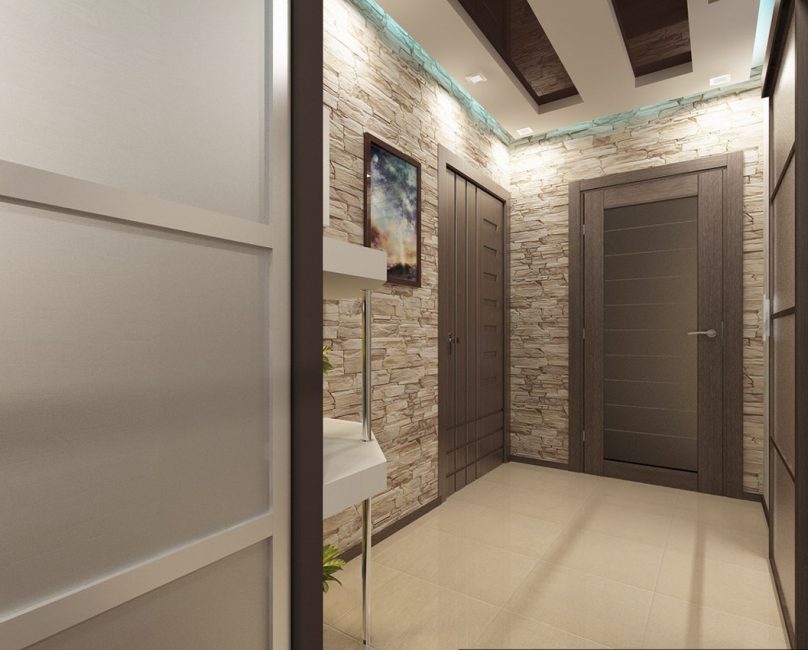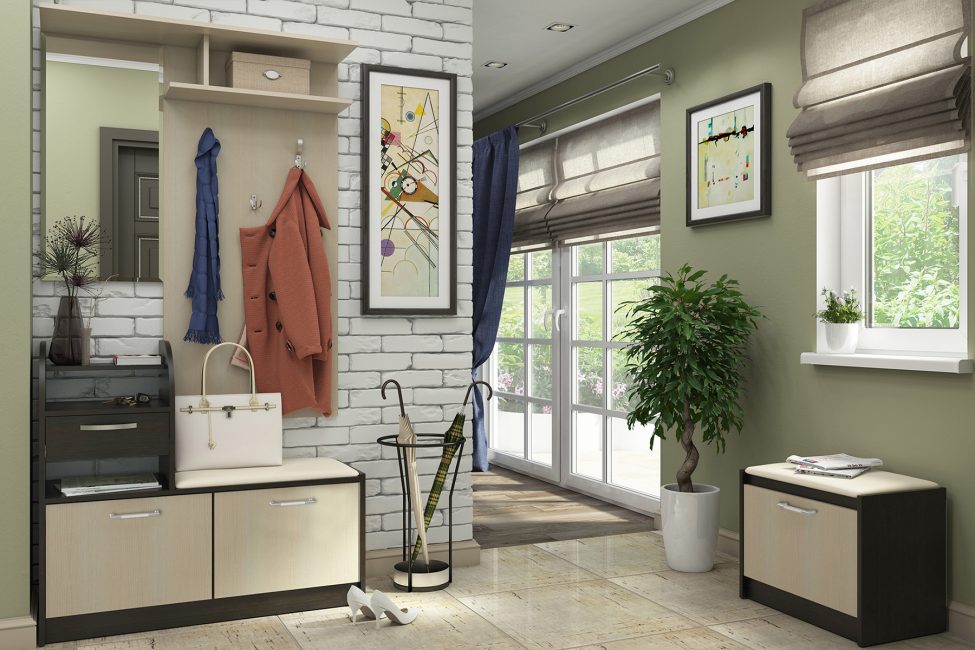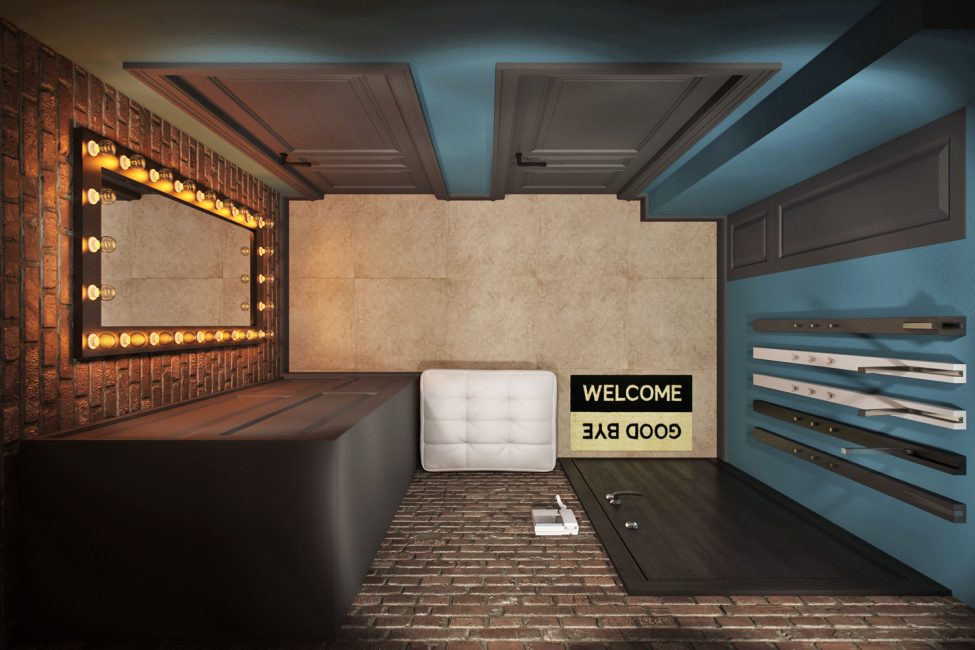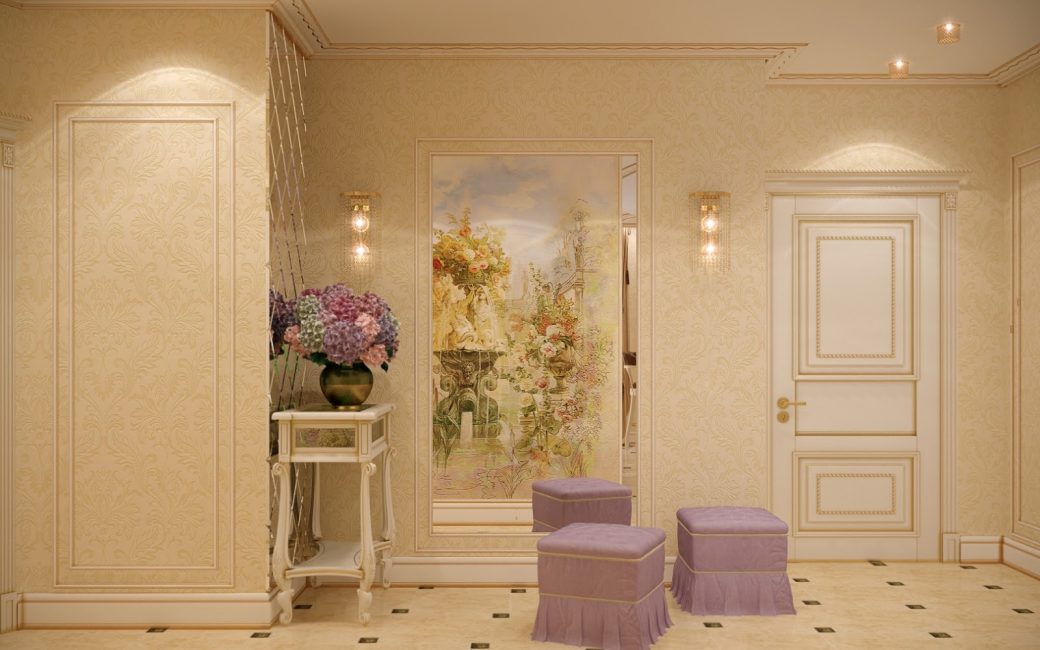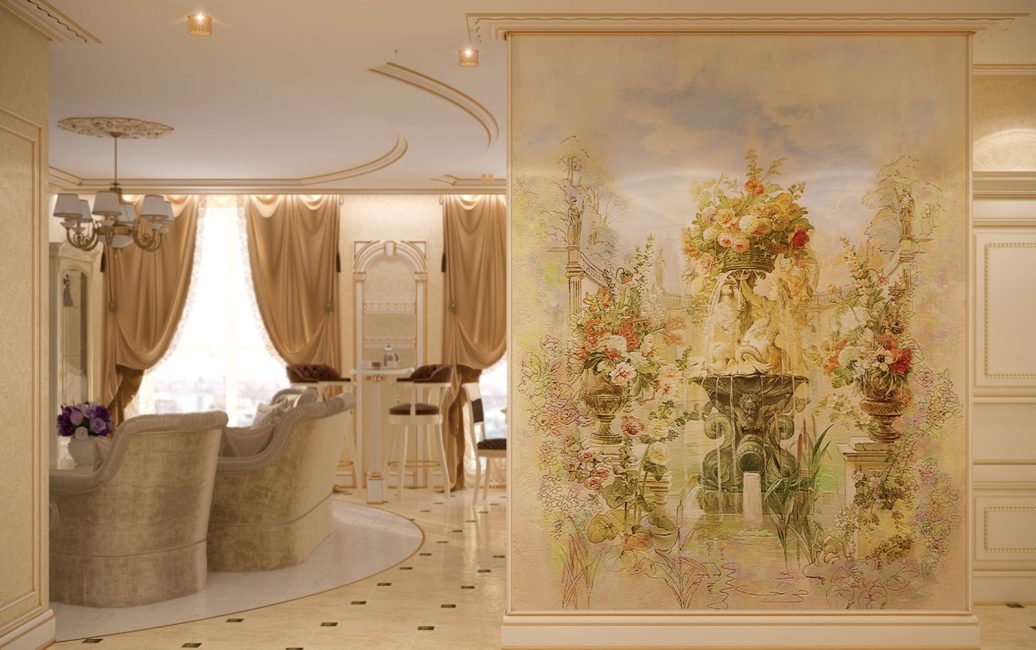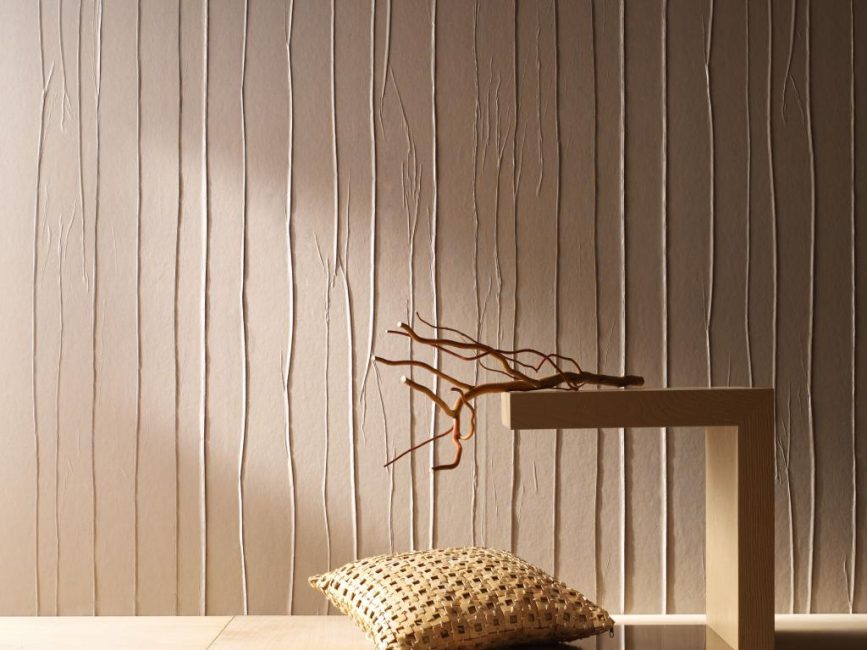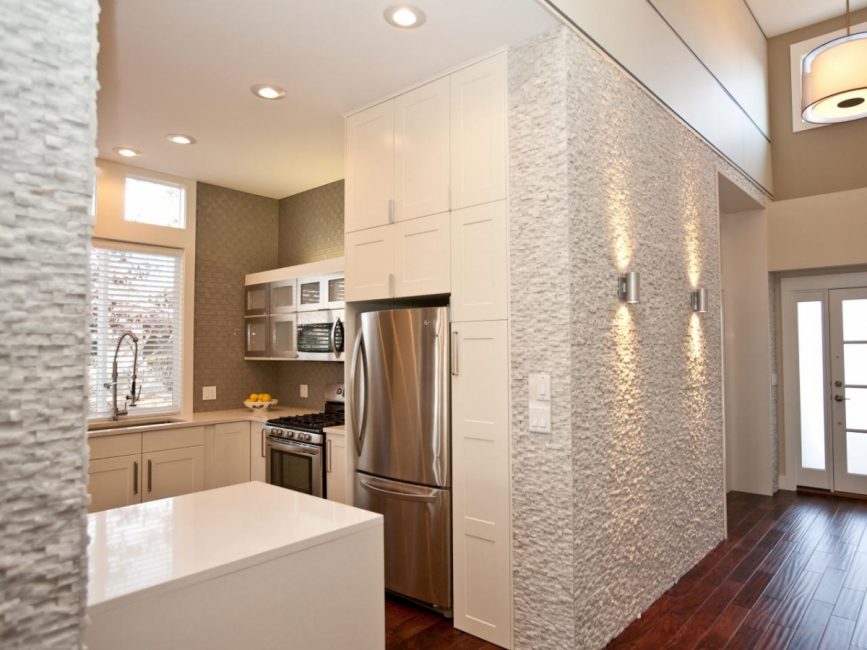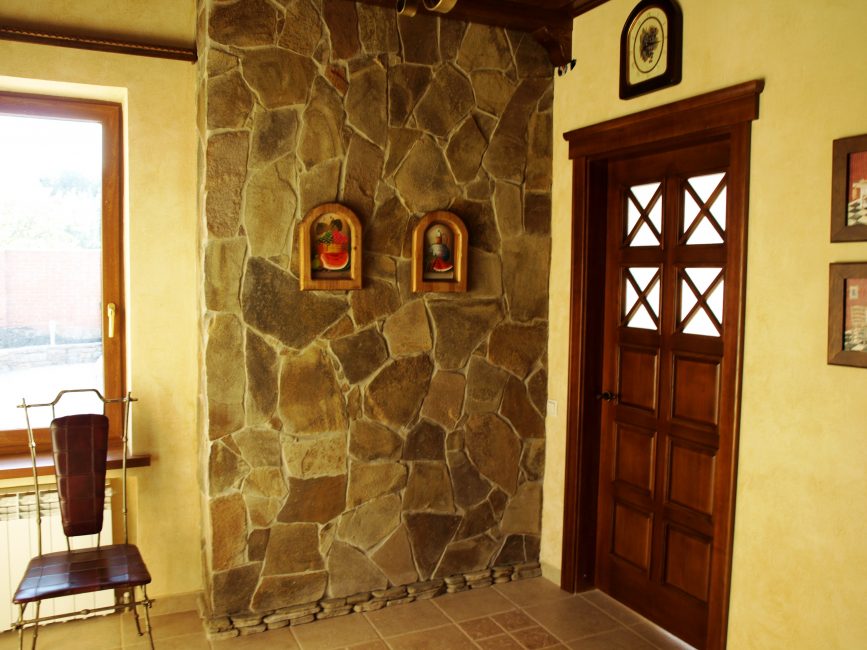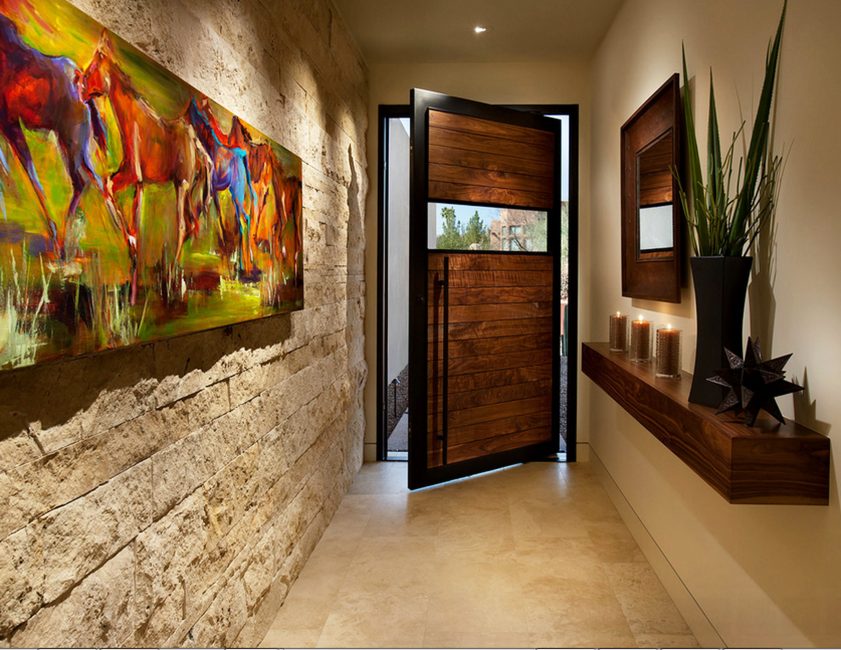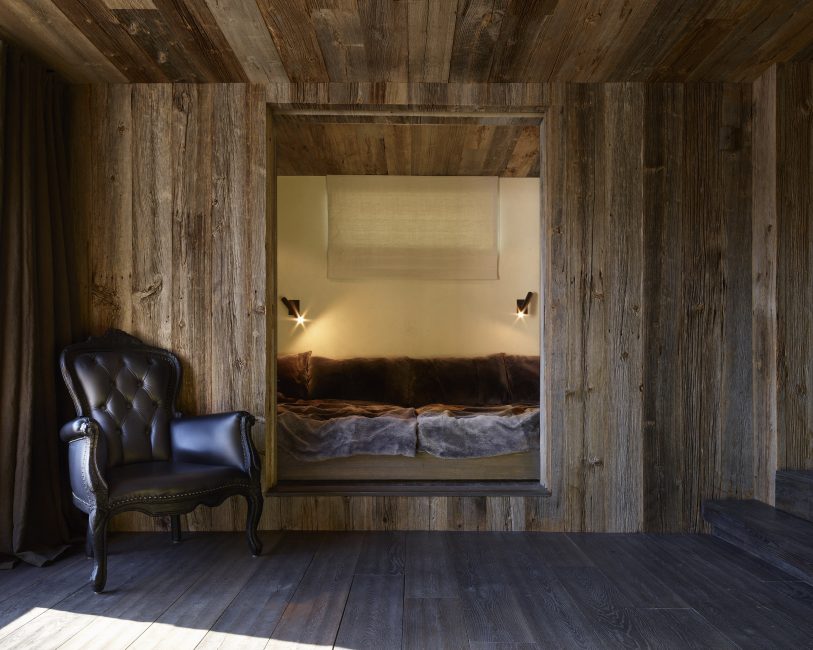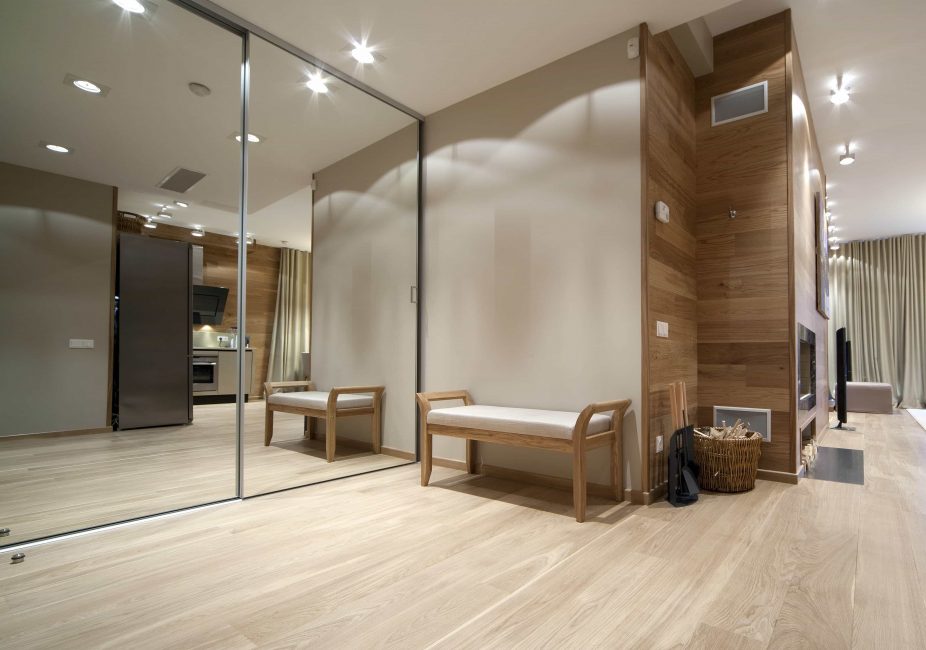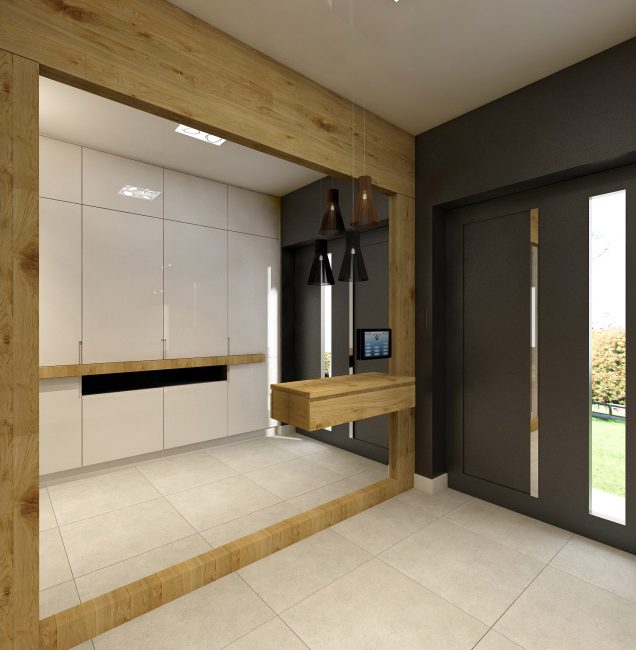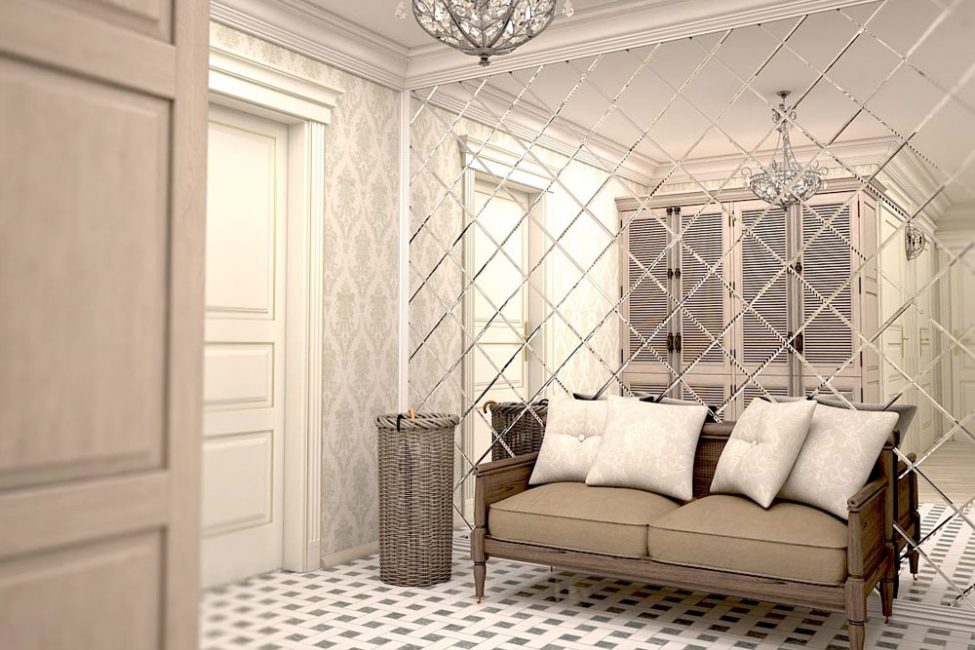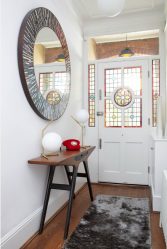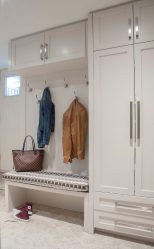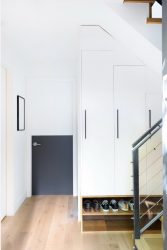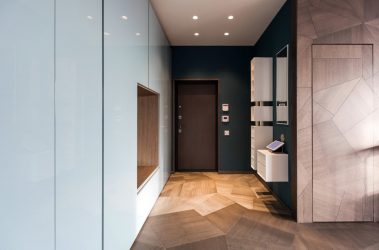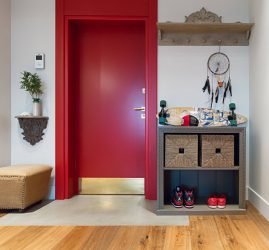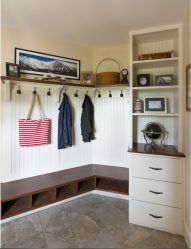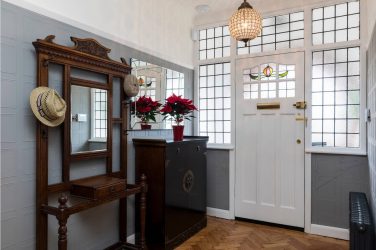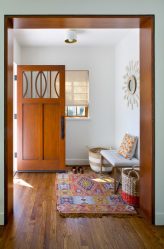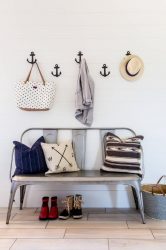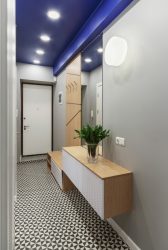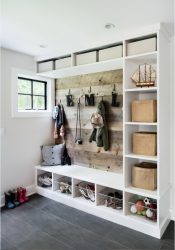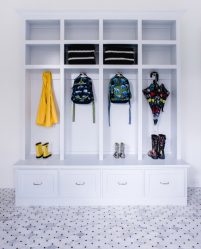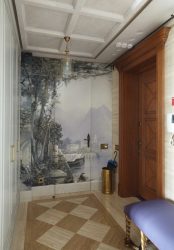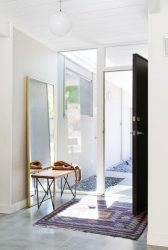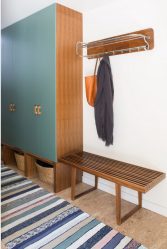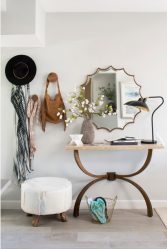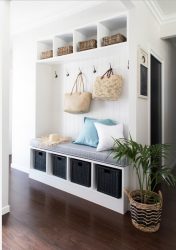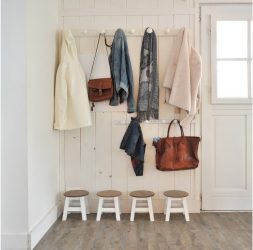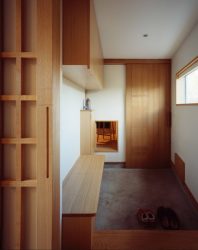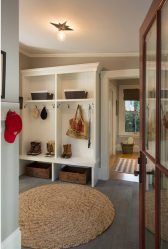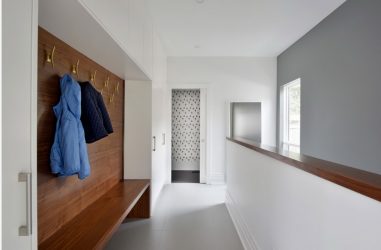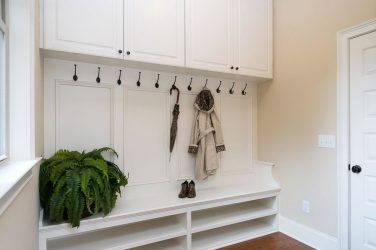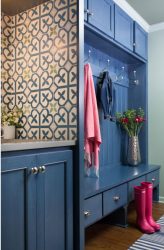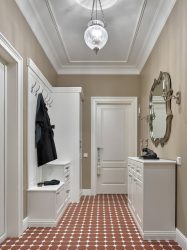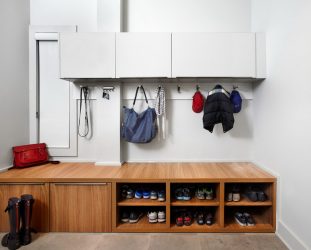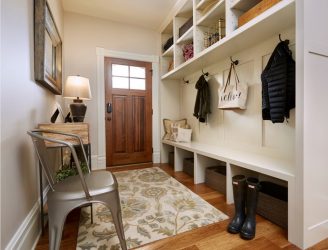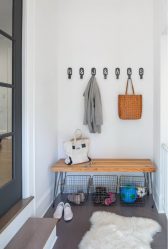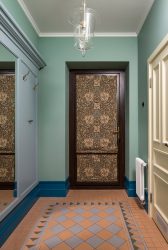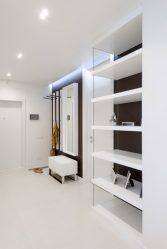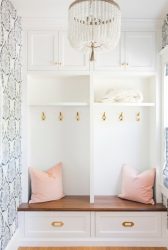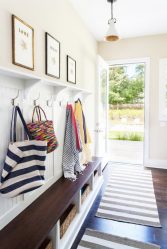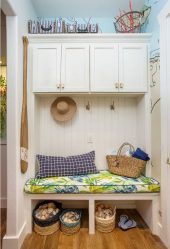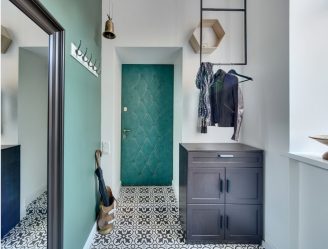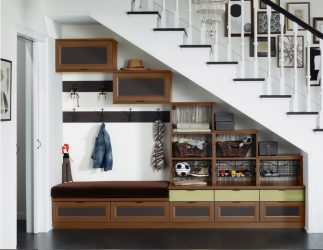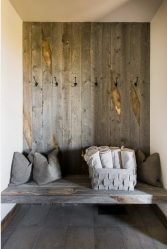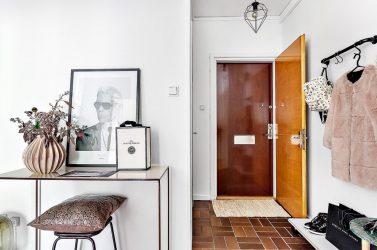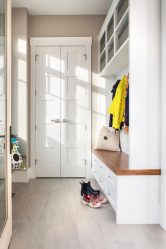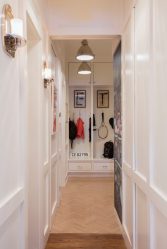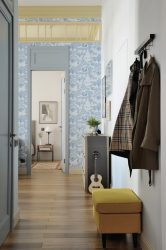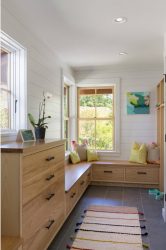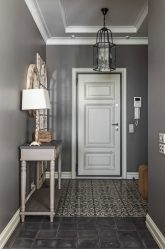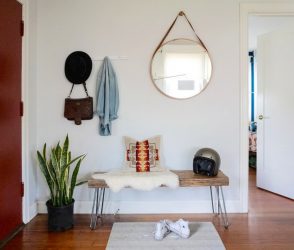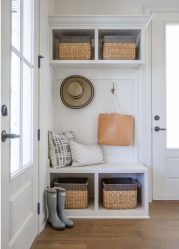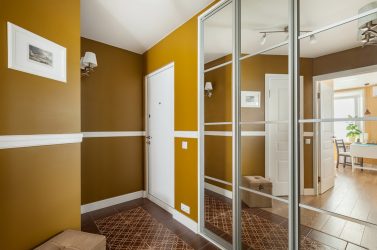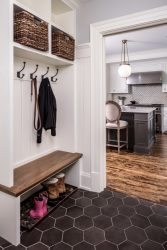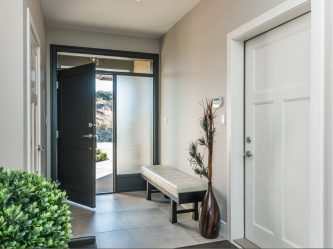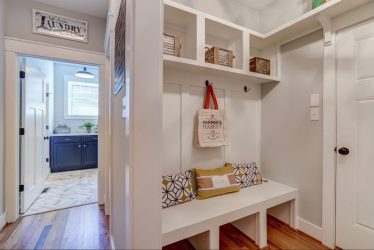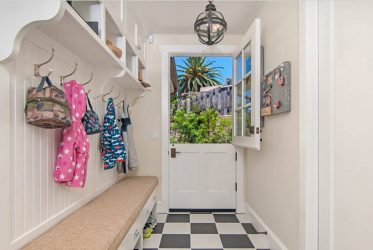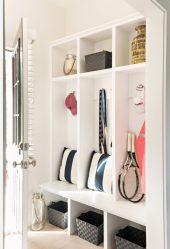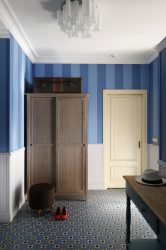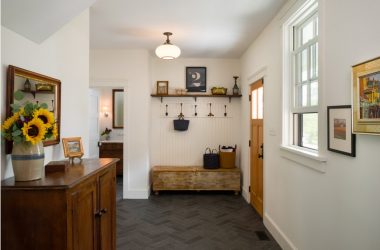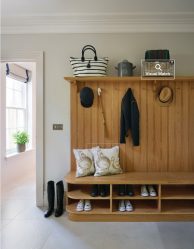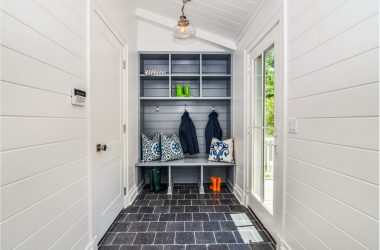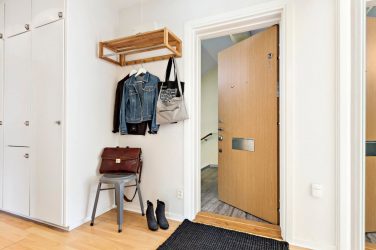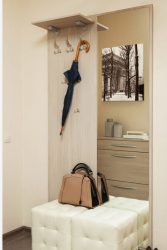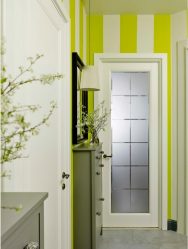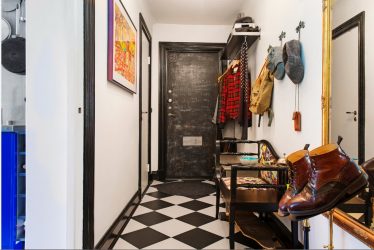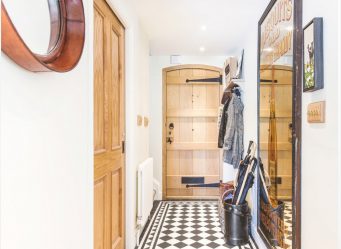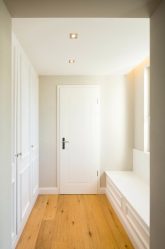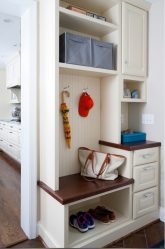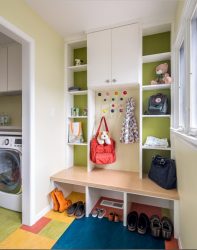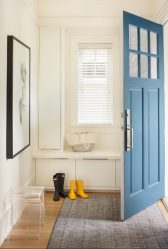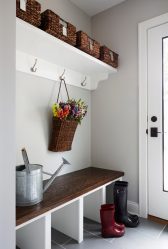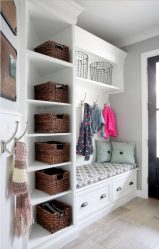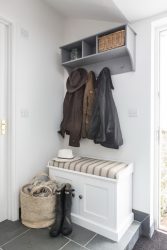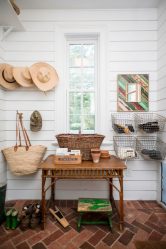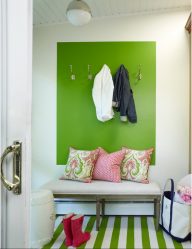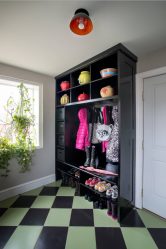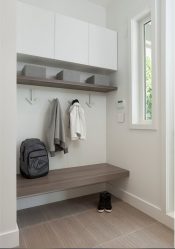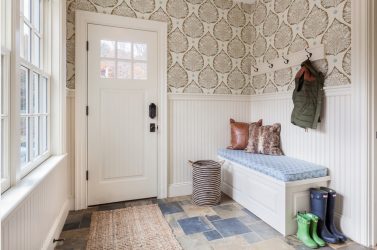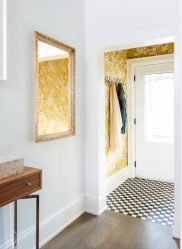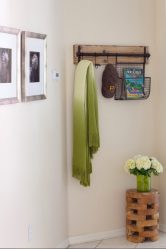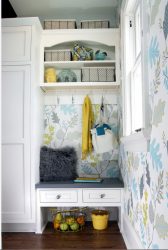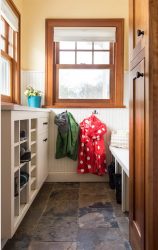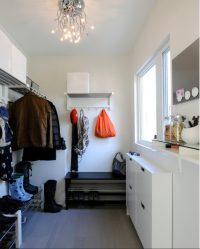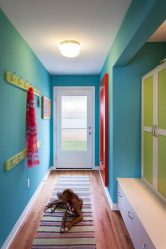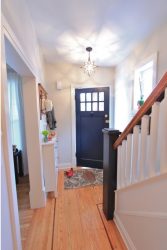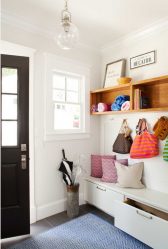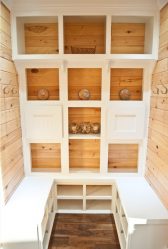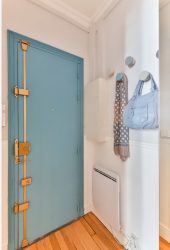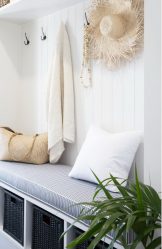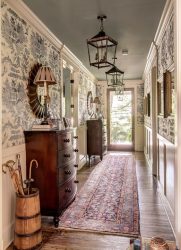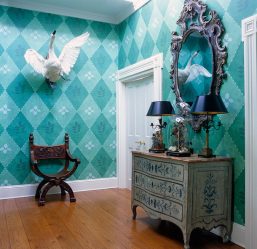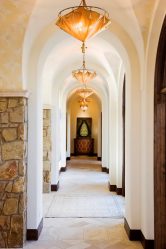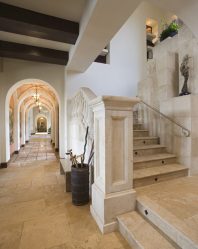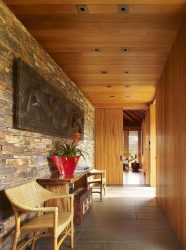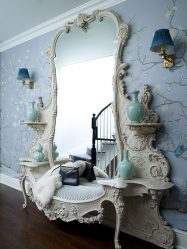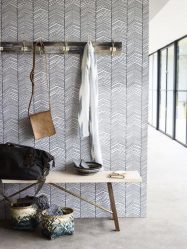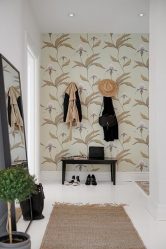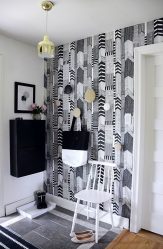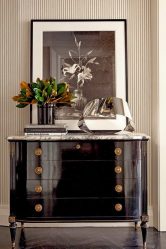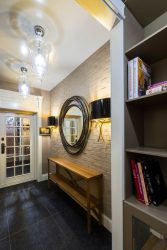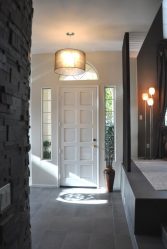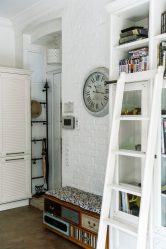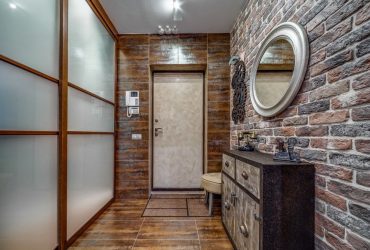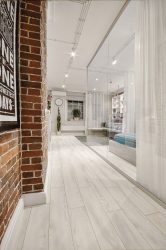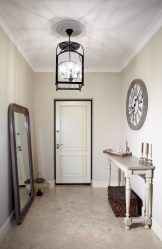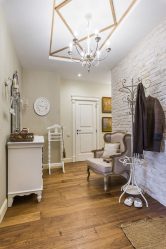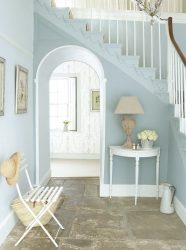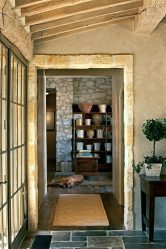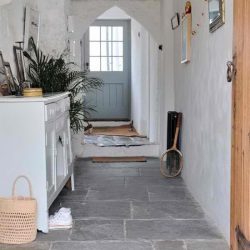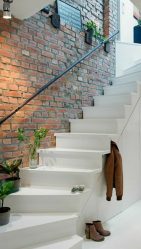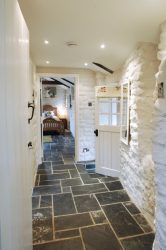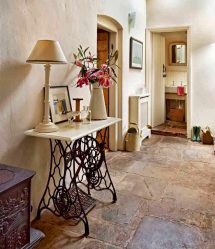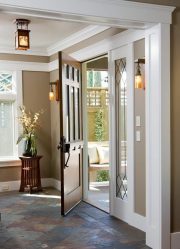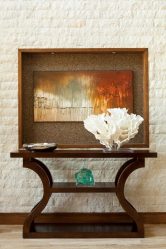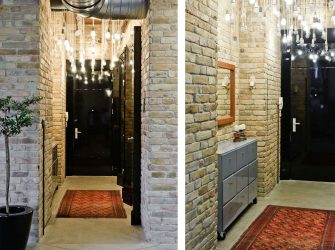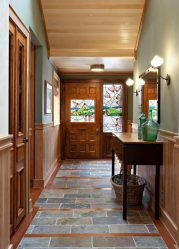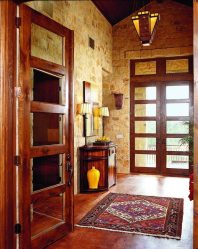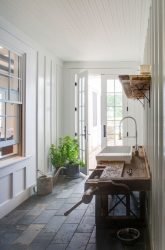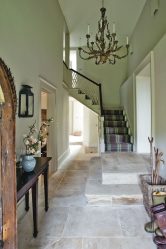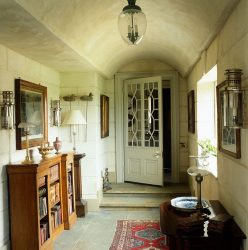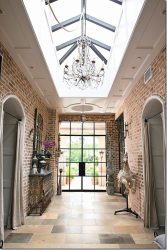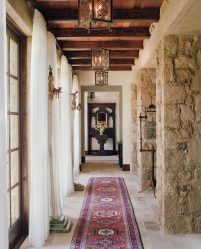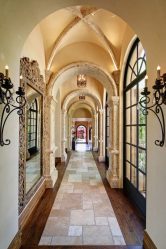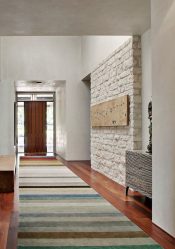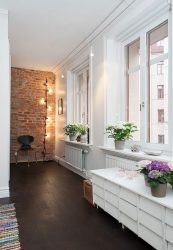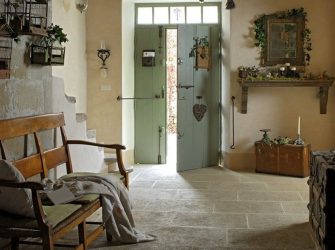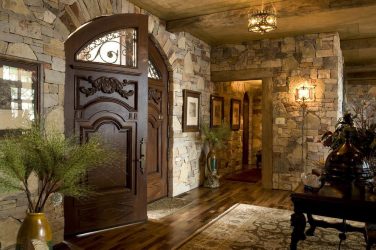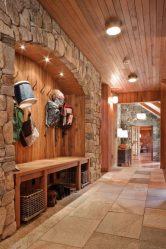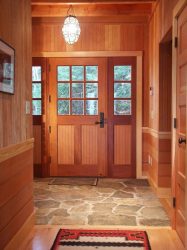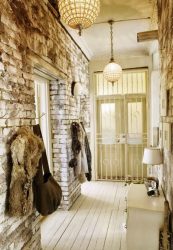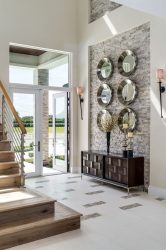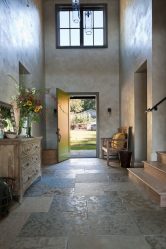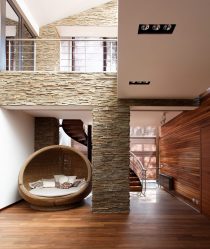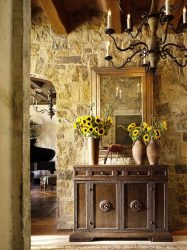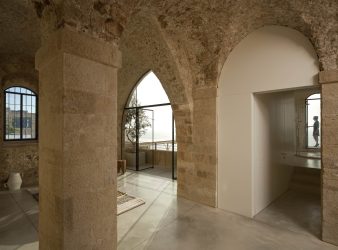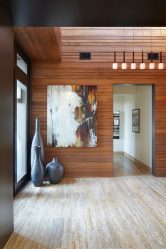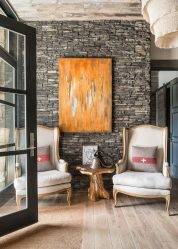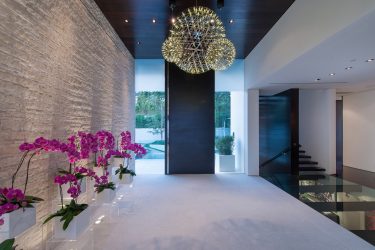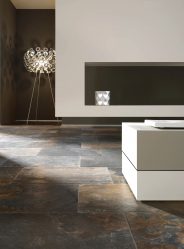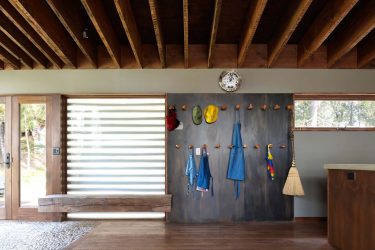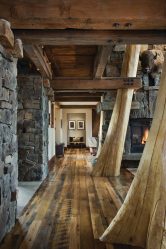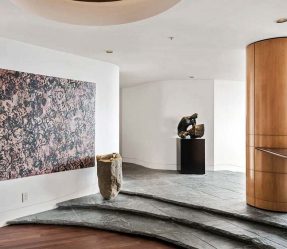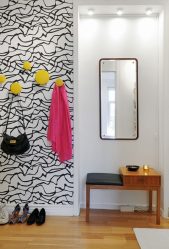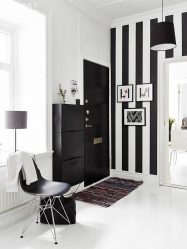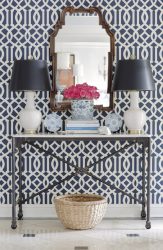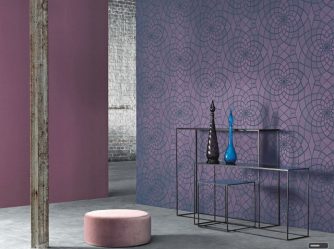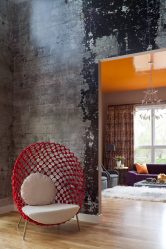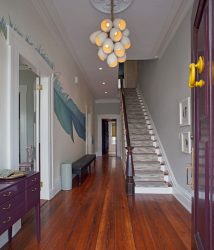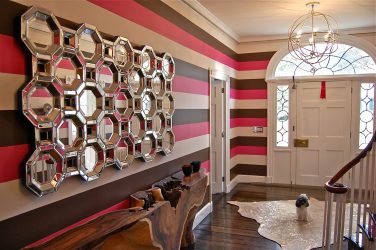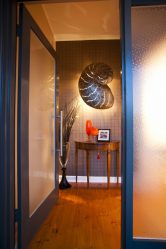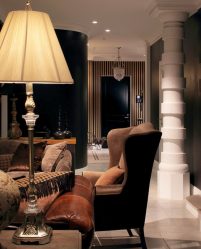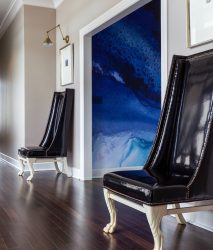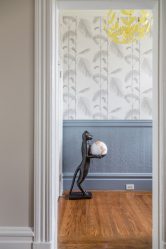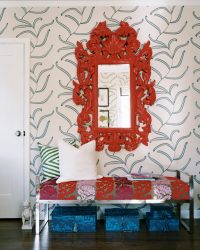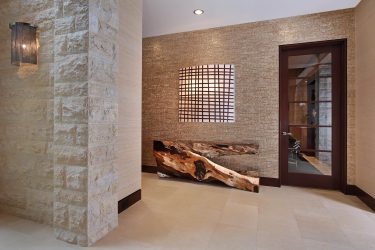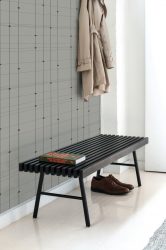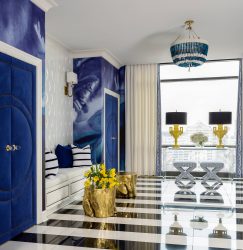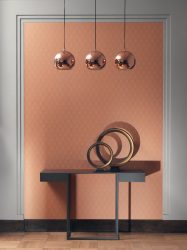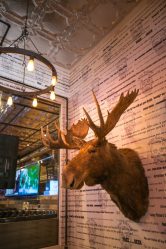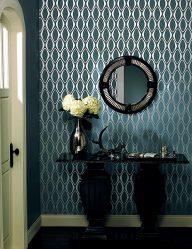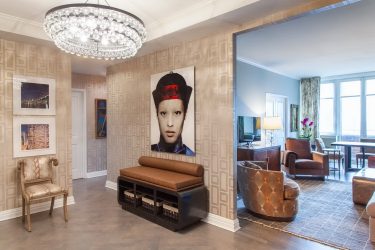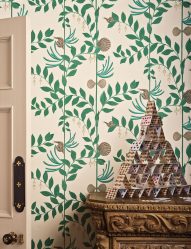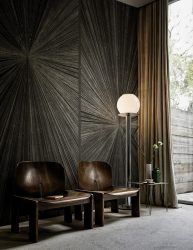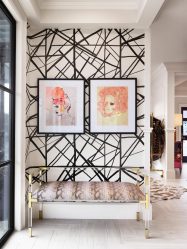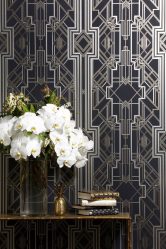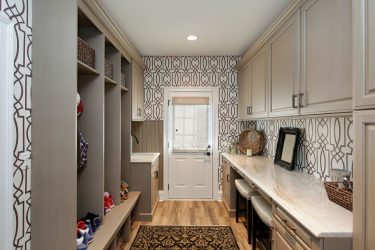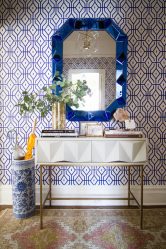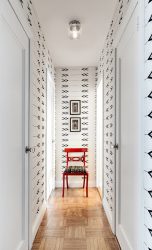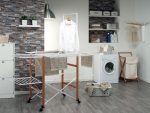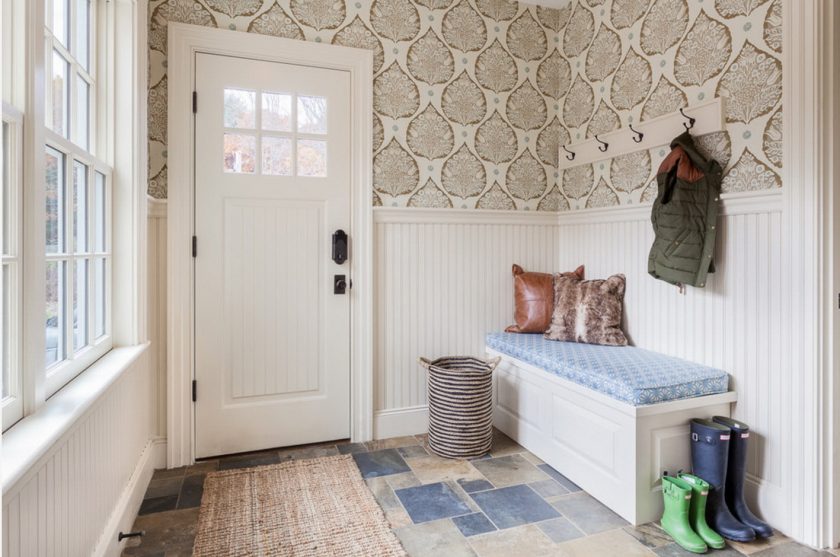
The walls of the hallway in the apartment or country house is decorated with durable materials that are resistant to frequent use.
Content of this article:
General rules of finishing
Halls in urban apartments have a modest footage, not equipped with windows, go into a common corridor. The decor of the room includes cupboard or a hanger for seasonal clothes, a mirror, a dresser or a shelf for storing keys. Owners of spacious apartments or country houses complement the corridor’s furnishings with banquettes, chairs or sofas.
The complexity of the room is the need to fit objects of furniture in a narrow space, without interfering with the opening-closing doorsthat go into the common corridor. Before buying materials you need to choose the color scheme, the texture of materials that are combined with each other.
return to menu ↑Color spectrum
A simple option - finishing the room to match the whole apartmentsIt is recommended to choose shades a little lighter in order to visually expand the space. Neutral Tones:
- beige;
- sand;
- Gray;
- aquamarine.
Combined with different styles of decoration and a large number of accessories.
Bright contrasting ornaments, floral or ethnic motifs in the decoration will suit the owners of spacious apartments. Such wallpaper suggest a moderate decoration of the room with mirrors or paintings.
Traditional beige or creamy range is suitable for any apartment. Shades give visual "warmth" to the interior, smooth out the low level of illumination in the room.
Cold tones combined with an abundance of mirrors require the installation of additional fixtures, the interior as a whole looks more "airy".
Unusual interior colors create an eclectic, hi-tech or loft interior. Bright room in red, orange, turquoise shades attracts attention, it becomes the accent of the whole apartment.
The color scheme of the wallpaper should be combined with a hint of door panels that are placed in the hallway.
- Most doors are designed “under the tree”, so the walls in a brown, beige or sandy shade will make a harmonious ensemble with paintings.
- Owners of transparent or frosted glass doors are free to choose colors.
- An entrance hall in an apartment without door panels installed (for example, in a studio) should be finished in the same shade as the rest of the premises.
The choice of texture
Smooth wallpaper texture, plasterwood tiles or paint does not attract too much attention to the walls. The expressiveness of the interior gives a bright shade to the walls, additional decor, large accessories.
The pronounced volumetric texture is characteristic of decorative plaster, wood panels, drywall or plastic. It is chosen as an accent, while the rest of the finish should be discreet.
For example, if the doorways in the apartment are finished in the form of round arches (without door panels), the pronounced texture will emphasize the boundaries of the room. It is recommended that owners of traditional hallways with an abundance of doors choose volumetric texture and light monochromatic finishes.
Combination of materials
The overall style of the decoration depends on the area of the hallway, the level of its illumination.
The owners of the standard mini-corridors, in which the entrances to all rooms of the apartment are placed, decorate the walls with a combination of two materials. Usually it is plain wallpaper and wide wooden plinth of light shades, which are in harmony in color and size with ceiling fillets.
Apartments with spacious halls that pass into the corridor can be made out of several materials.. For example, the combination of wooden panels in the lower half of the walls and wallpaper - at the top, creates a room in retro style. Hallways in country houses for large families make durable artificial stone and plaster.
Large bright hallways, halls in the “old stock”, private houses and spacious apartments are equipped with separate windows. Walls in such rooms are finished with several materials:
- art paintings (frescoes);
- stucco;
- miniature niches with statues.
Methods of combining materials
The walls are trimmed with wear-resistant materials, the lower part is decorated with wide wooden plinths, panels of artificial stone, hard wood. This protects the surface from mechanical damage.
Bright textures from artificial or composite materials (fiberglass, ceramic tiles, laminate, textured plaster) create accents in the interior. For example, tiles, frescoes, or shaped wooden panels decorate doorways and decorative compositions.
Contrasting colors or texture materials create a strict classic interior. For example, the combination of light textured plaster with lacquered dark walnut panels creates a vintage flavor of the room.
The decoration of the hallway walls creates the style of the room, visually increases its size. Finishing materials should be combined in color and texture. Surface finish:
- plinths;
- dumbbells;
- wallpaper
As a decor I use wooden or stone elements. The owners of the spacious halls with windows add to the decoration of frescoes, niches, statues, a dense layer of textured plaster.
return to menu ↑ return to menu ↑Traditional design of the walls of the hallway
The choice of materials for decoration depends on the style of the interior, the area of the hall, the load on the room, the available budget. Inexpensive ways to design - painting walls, wallpapering, paneling, imitating natural materials.
return to menu ↑Painting walls
A quick option to finish the walls - their painting matt or gloss paint. Depending on the density and chemical composition, there are oil, acrylic or water-based paints. For registration of the hallway combine several colors and textures.
A two-tier combination of dark and light tones of one scale is suitable for decorating narrow hallways. Light paint occupies the upper half of the walls, visually expanding the space and increasing the illumination of the room. Dark shade have closer to the level sex, it protects the hallway from pollution, emphasizes the geometry of the room.
Universal combinations:
- sandy and chocolate;
- gray and blue;
- turquoise and bottle green shades.
Black and white gamma requires a high level of illumination, so it is often found in spacious halls with by windows.
The combination of glossy and matte textures looks less noticeable than the choice of contrasting colors, so it is suitable for miniature hallways. The transition between the surfaces can be smooth (the classic two-level version), geometric (the glossy texture “penetrates” into matte in the form of corners), and have a soft wavy shape.
Gloss paint painted doorways, the space around the mirrors or lamps. The transition line is decorated with:
- textured plaster;
- glitter;
- thin strips of PVC film of different colors.
Advantages and disadvantages of painting
Painting the walls of the hall does not cost much, finishing is done in a few days, the choice of colors and textures is huge. The main drawback of staining is the cost of purchasing special equipment and protecting furniture from drops of composition. Cheap paints are toxic, apartment owners, it is desirable to leave for a period of repair.
The combination of several shades and textures of paint creates an original interior, plastic material allows for smooth transitions, placement of accents. The traditional design of the hallway combines a dark and light shade of paint. Glitters glued to the drying paint will help create a bright style.
return to menu ↑Wall decoration wallpaper
The use of wallpaper in the hallway - the budget and the fastest option of cosmetic repairs in this room. The choice of texture, color range and width of the roll of wallpaper is subject to the rules.
Wallpaper texture
Rolls with a pronounced texture imitating wood, brickwork, textiles or plaster will suit the owners of the hallway with smooth walls. These wallpapers are heavy, look catchy, require additional lighting.
Owners of miniature hallways with a lack of natural lighting choose wallpaper with a glossy reflective texture that visually expands the space. The abundance of "mirror" particles gives the interior airiness, distracts attention from furniture and decor. These wallpapers are light, do not require alignment of the walls, easily fall on a rough surface, combined with most styles.
Wallpaper based on natural materials:
- bamboo;
- silks;
- veneer;
- velvet;
- skin
Suitable for large halls, decorated in the same style.For example, bamboo wallpaper is a bright attribute of eco-style, wall covering with imitation of velvet is spread in retro style.
The color scheme of the wallpaper
Plain wallpaper with glitter, small geometric or floral patterns are suitable for hallways of modest size. Warm sand, cream, sea or wood colors are combined with most materials. Cold shades, bright colors, an abundance of contrasts create a “juicy” interior, which is best complemented by light-colored furniture.
"Natural" colors include nice looking shades:
- green;
- brown;
- blue;
- red;
- beige flowers.
Such decoration requires additional floor lamps or sconces, creates an interior in a restrained classic or minimalist style.
Artistic types of wallpaper
Among the unusual ways of decorating the walls stand out wallpaper that turns the walls of the hallway into finished paintings. The material is suitable for owners of small, well-lit corridors with miniature furniture. Wall mural - hall accent, so the decor is placed around without disturbing the integrity of the picture.
Wallpaper in 3D creates a three-dimensional image, which is placed on one of the walls of the room in compliance with the rules:
- The image must be abstract. Flowers, animals, landscapes, geometric compositions will not overload the interior, tire the eyes of the owners.
- The color scheme and the overall style of the picture should overlap with the rest of the interior. For example, if the entire apartment is decorated with “coarse” dark textures, the bright industrial landscape will become the center of the hallway.
- Have a wallpaper on a free wall, the number of furniture and accessories need to be kept to a minimum. Otherwise the hall will be overloaded with details, the general impression will be broken.
Advantages and disadvantages of finishing wallpaper
A simple way to update the finish is available for hallways of various sizes, the wallpaper has many textures and colors, they are easy to replace if damaged. However, high-quality wallpapers have a high price, the finishing procedure takes time and skill, the material is sensitive to moisture.
Making the hallway textured wallpaper neutral shades - a universal version of the interior update with an abundance of wall accessories. Art wallpapers create a bright design, textured material is suitable for a minimalist finish. The combination of several colors and textures will visually expand the hallway, put the necessary accents.
return to menu ↑Paneling
Panels visually reduce the roughness of the walls in the hall, suitable owners of apartments in the "old fund", owners of country houses with open wiring. Paneling does not require preparatory work, it is carried out quickly, updates the room. There are several materials for wall panels.
Plastic panels
Inexpensive and durable material for finishing the hallway, which improves sound insulation in the room, is not afraid of moisture.
The visual design of PVC panels is diverse: the surface is decorated with drawings, patterns, glossy or matte coating is used. Finishing can imitate a wooden, plastered, sheathed wall of textiles.
Panels from a chipboard and MDF
Material is suitable for registration of a hall in the Scandinavian style, giving an unobtrusive retro color. Such panels imitate the surface of the tree, are made in neutral shades, combined with striking accessories.
Light wood panels can completely cover the walls of the hallway in country style, provenceretro. Carved ornaments made of natural wood will give the room a touch of classic antiquity.
Panels of natural materials
Wall cladding with wood panels is suitable for owners of well-lit rooms with low humidity. The material does not require additional decor, create an interior in classic or eco styles.
Cork wall panels are popular among owners of small hallways. The pronounced texture and various colors of the material are complemented by an abundance of mirrors, lamps, and wide plinths.
Ceramic panels (tile)
The decoration of the hall with ceramic tiles with a matte or glossy surface protects the room from moisture, visually aligns the walls. Depending on colors and sizes, the wall ceramic tiles create a classic, palace or minimalist interior.
The advantages and disadvantages of paneling
The disadvantages of such finishes include the need for professional installation, reduction of the usable floor space, the complexity of updating the finishes in the future.
Making the panels - a quick way to update the interior in an old house without major repairs. Depending on the material chosen, the panels create a strict or eclectic interior. The two-level decoration of the hall with wood panels and plaster imitates half-timbered houses.
return to menu ↑ return to menu ↑Artistic finishes
Regardless of the selected materials, the hallway coloring is easy to create using artistic painting, a combination of several textures or materials. Among the popular solutions are:
- imitation of a brick wall;
- creature frescoes;
- use of textured plaster;
- natural stone trim;
- laminate flooring;
- mirror panels.
Brick wall imitation
The popularity of the loft style leads to the emergence of various ways to imitate a brick wall in the hallway. Classic brickwork is painted with light shades, creating a sleek interior.
A simple way to create a “brickwork” is to sheathe the walls with PVC panels that mimic classic brick. This option is suitable for apartment owners in houses with thin walls, wishing to complete the finish promptly.
More reliably brickwork imitates textured plaster, varnished. Installation requires surface preparation, while it tolerates the installation of additional decor and increases sound insulation in the room.
The owners of the spacious premises fit decorative facing bricks, which lay the walls. This option creates an authentic interior in the style of a loft, requires large financial investments, lengthy work.
Advantages and disadvantages of the "brick" wall
The current, inexpensive and durable way to give the hall a touch of loft style has several disadvantages. Performance of high-quality imitation of a brick wall requires special materials and knowledge, such a finish without an abundance of textiles looks rude, requires regular cleaning.
Imitation brickwork is central in the hallway, it is recommended to arrange it in neutral light shades. Wrought lamps or wooden décor placed on the wall will help to make the hallway cozy. You can imitate brickwork with panels, decorative plaster or thin facing bricks.
return to menu ↑Fresco decoration
Artistic painting of walls will suit fans of palace interiors, empire styles, art deco. Visually, such a decoration looks catchy and unusual, for the frescoes choose floral designs, landscapes, patterns.
The walls are painted on a layer of raw plaster of various shades. Universal option - gray or white shade of walls with a contrasting pattern.
- The traditional option is a surface with a rough relief, near the image looks a bit blurry. This decor requires careful alignment of the surface, moderate use of accessories.
- The frescoes with the imitation of the painting on the fabric look like solid hand-made dense damask wallpapers, portraits and images of buildings look good on this texture.
- The vintage color of the room will add a fresco with the effect of cracks characteristic of ancient buildings.
Advantages and disadvantages of frescoes
The original solution gives the room a vintage style, complements the palace interiors, does not require additional decor. The disadvantages of frescoes include their high price, the need to prepare the walls, the complexity of combination with other styles of interior.
The frescoes decorate the spacious rooms, it is recommended to choose abstract themes:
- landscapes;
- still lifes;
- ornaments.
This finish becomes the hallway accent, involves the use of a neutral color scheme in the interior. It is better to place the image on a free wall so as not to overload the room.
return to menu ↑Registration by impressive plaster
Owners of narrow hallways with poor lighting use textured plaster with reflective particles. The material creates a more expressive texture than ordinary wallpaper, while the decor options are limited by the imagination of the owner.
Figured rollers or ready-made stamps create a single ornament on the entire surface of the walls. To create a bright interior, the pattern is shaded with paint or glitter. Venetian plaster imitates marble textures of various shades, combined with frescoes and stucco gives a shade to the palace interior.
Advantages and disadvantages of textured plaster
The material visually aligns the surface, allows you to simulate various surfaces, to create harmonious patterns. The disadvantages of plaster are her:
- high price;
- exposure to moisture;
- long finishing work.
Processing the walls of the hallway textured plaster creates an original interior, allows for abundant use of decor. Unlike the wallpaper, the pattern on the plaster does not need to dock, there is the possibility of combining several layers of material. The pronounced texture or glitters create a festive mood.
return to menu ↑Stone trim
Natural or acrylic (artificial) stone is used for continuous wall decoration or placement of accents in the hallway decoration.
Facing the hallway with stone creates a laconic interior in an industrial style. Material complement:
- massive accessories;
- abundance of lighting;
- large mirrors.
Stone trim doorways, corners and baseboards looks more soft. The combination of textured plaster with white natural stone creates a country style.
Advantages and disadvantages of stone finishing
Facing panels of stone gives the interior of the hall a monumentality, the material is durable, suitable for most styles of decoration. The disadvantages of stone finishes are its high price, the complexity of the work carried out and the large weight of the material.
With the help of stone panels place accents in the interior of the hallway: framed doorways, mirrored panels, plinths. Facing the room entirely creates a monumental interior in industrial or vintage style. Separate elements of stone are well combined with bright accessories, neutral plaster.
return to menu ↑Facing wall laminate
Wooden panels are installed on the empty wall as an accent of the hallway interior. It is recommended to choose wide boards with a pronounced texture of wood, the remaining walls are decorated with plaster or wallpaper for painting.
Rough surface of the wall laminate flooring looks softer, parquet lacquer coating gives the interior a vintage shade. Glossy surface reflects light better, looks more elegant.
Advantages and disadvantages of wall laminate
The bright texture of natural wood creates a modern unusual interior, the material is eco-friendly, combined with most colors. Installing laminate requires preparatory work, the material is sensitive to temperature and humidity, the rest of the finish should be neutral.
Narrow panels lined with glossy or matte laminate zones the corridor space. Shades of natural wood are combined with warm colors, auxiliary lighting and decorative mirrors.
return to menu ↑Mirror paneling
Mirror surfaces visually expand the space of the hallway, increases illumination, makes the room more comfortable. The joints between the panels are decorated with aluminum profile or grout with glitter.
The free part of the wall or the corners of the room lay out small mirror panels, dividing the hallway into functional areas. Facing the top of the walls significantly increases the height of the ceiling, giving the interior "airiness."
Fans of minimalist modern interiors, high-tech style use rectangular panels, vintage style lovers choose oval shapes, distribute mirrors throughout the room.
Advantages and disadvantages of mirror panels
Bright unusual material is easy to install, visually increases the space, combined with any shades of finish. Mirror panels require careful maintenance, are subject to mechanical damage, have a high price.
The arrangement of decorative mirrors in the interior expands the space, divides the large hallways into functional ones. zones. Large panels look like a single canvas, the joints of small elements are decorated with decor.
return to menu ↑ return to menu ↑Results
A variety of materials for wall decoration allows you to decorate the hall of any size in the original style, add interior accessories, arrange the necessary furniture. The combination of colors and textures places accents, emphasizes the geometry of space, zoning the room.
The combination of durable materials and artistic decoration forms the original interior, which does not require daily care and is easily updated.
Hallway finish
Upgrade options
